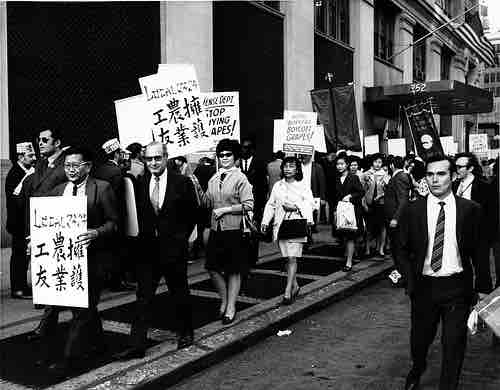Asian Americans
It might come as a surprise to find that California was one of the last states to ratify the fifteenth amendment to the US constitution, which prohibited any state from limiting a male citizen's right to vote based on race. However, in the late 1800s many politicians in California were adamant that migrants from China and their descendants should be prohibited from voting. Like African American communities in southern states, Asian American communities have faced a long history of voter discrimination and disenfranchisement in the US .

Political Participation
Asian American communities have a long history of both disenfranchisement and political participation in the US.
Today the Asian American community in the US is quite diverse, with longstanding Chinese and Japanese communities particularly on the west coast, along with large Pacific Islander populations both on the west coast and in Hawaii. The Asian American community is also one of the fastest growing groups in the country in large part because of new immigration. The three largest groups are made of people who have emigrated from China, India and the Philippines. These newly naturalized citizens and their children make up the largest group of Asian American voters.
In addition to being a diverse group, the Asian American community is also highly polarized in terms of its socioeconomic profile. Some Asian Americans have very high income, while others have very low income. This diversity and polarization makes it difficult to generalize the voting patterns for the Asian American community. In some areas voting rates are significantly higher than the US average, or the rate for non-Latino white voters. In others it is significantly lower.
Differences are related to indicators such as income and education. Like most other groups in the US, Asian Americans with more education and higher income tend to vote more. Other indicators for voting participation among Asian Americans are the political climate for both their home country and their local community.
Language Minority Voting Rights
One important institutional change aimed at increasing the rates of voting in Asian American communities is the Language Minority Provision of the Voting Rights Act. It was first introduced in 1975, and later amended in 1992 and 2006. This provision is aimed at upholding the principles of the fourteenth and fifteenth amendments to the US constitution by attempting to eliminate language-based barriers to voting. This provision holds that election documents, such as voting notices and ballots, must be provided in the minority language alongside English, where appropriate.